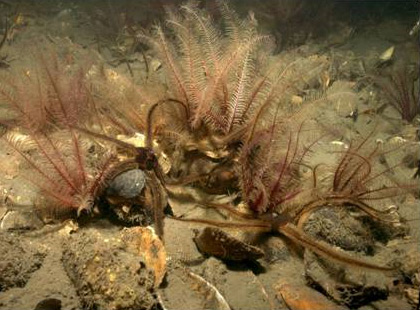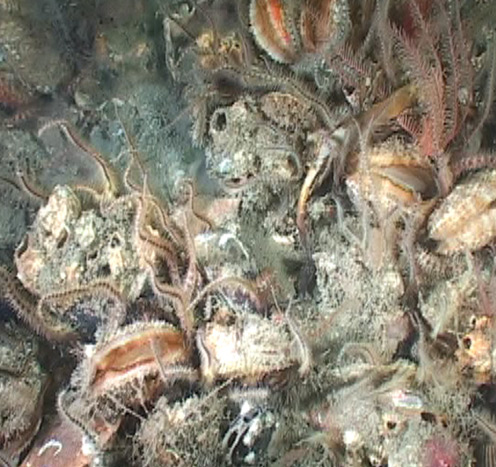A large solid, swollen and roughly oblong or triangular shaped shell. The hinged end is bluntly angled, with the rest of the shell being more gently curved.
In younger adults the outer shell is a dark blue or purplish color. As they grow older the perisostracum (the surface layer of shell) can lend a yellow glossy or dark brown hue. There is no ribbing but growth lines may be noticeable or may be evident in the unevenness of the outer layer of the shell. The inside of the shell is white except for the areas where muscles were attached. Adults are, typically, at least 4 in (10 cm) long but individuals may grow as large as 8.6 in (22 cm).
A large solid, swollen and roughly oblong or triangular shaped shell. The hinged end is bluntly angled, with the rest of the shell being more gently curved.
In younger adults the outer shell is a dark blue or purplish color. As they grow older the perisostracum (the surface layer of shell) can lend a yellow glossy or dark brown hue. There is no ribbing but growth lines may be noticeable or may be evident in the unevenness of the outer layer of the shell. The inside of the shell is white except for the areas where muscles were attached. Adults are, typically, at least 4 in (10 cm) long but individuals may grow as large as 8.6 in (22 cm).
These mussels are often found living among gravel and rocks, from just below low-tide line to water 600' (183 m) deep. Horse mussels us byssus threads to attach to the substrate and like blue mussels can form dense mats of live individuals.

These mollusks live below the tide line and attach themselves to a solid underwater substrate.
The small pea crabs Fabia subquadrata or Opisthopus transversus may be found living within the shells of living horse mussel.s
Adults are broadcast spawners, releasing eggs and sperm into the water column. The spawning season is not well defined and can vary with depth and location. It has been suggested that major spawnings occur at intervals of several years, with the possibility of partial spawnings one or more times each year (Wiborg, 1946; Rowell, 1967). Newly fertilized individuals live the first stage of their life as planktonic larvae. After 3 or 4 weeks they settle, attach to a substrate, and metamorphose into juveniles.
A wide ranging species that lives in colder coastal waters. On both coasts of North America from the Arctic Seas to New Jersey, and from the Bering Sea to San Pedro, California. Also along the coasts of Japan, Iceland, Europe, NW Africa, and some Mediterranean areas.
Beds with high numbers of individuals form horse mussel reefs that serve a number of important functions. The filter feeding can collectively filter large volumes of water. The presence and actions of the mussel also enrich the benthos by drawing other organisms to the mussel reef. Local species richness is among the highest found in any cool water Atlantic benthos community. The young of many species use these areas as nursery grounds.

Horse mussels can form dense beds.
The periostracum easily flakes off dry adult shells, and in young shells it is drawn out into triangular, pointed projections. This large mussel is frequently used as fish bait, and in some parts of Europe as food.
